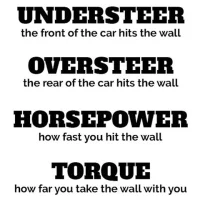Thank you for the reference, so is the reason our Stingers have staggered tires #1, #2, or #3?
---------------------------------------------------
With that said, there are a few reasons to go with staggered tires. One is weight bias. If you have a car that has a large majority of its weight over one axle, that axle should have bigger tires. See Porsche 911s with their rear-engine weight bias as an example.
Two is power. If you have a rear-wheel drive car that has a lot of horsepower, you may need bigger tires on the rear to help put that power to the pavement. Why not just make all of the tires bigger in that case? The size of the front tires is often limited by the fact that the front wheels have to steer left and right. Too wide of a tire may rub when the steering wheel is turned. Super-wide tires in front can also aggravate the tendency to hydroplane when hitting puddles, and may make the steering feel unduly heavy.
Three, and often the most relevant, is style. The staggered look, with big tires on the back, is generally considered to be cool. I think part of that is driven by the fact that it's usually the more exotic cars that need staggered tires: rear or mid engine, high horsepower, RWD. These attributes describe some of the most iconic cars in history, from the Ferrari F40 to a Top Fuel dragster. Such is the cachet of wide rear tires, that I will often have customers with FWD cars ask for a RWD-style staggered set-up, causing Isaac Newton to spin in his grave at 8,500 RPM.





